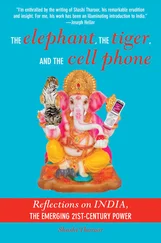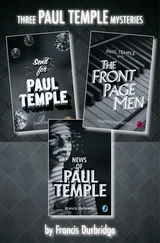Morgenthau was incensed at the request and stormed out of Talaat’s office. He again cabled back to Washington, imploring his higher-ups to take heed:
I earnestly beg the Department to give this matter urgent and exhaustive consideration with a view to reaching a conclusion which may possibly have the effect of checking [Turkey’s] Government and certainly provide opportunity for efficient relief which now is not permitted. It is difficult for me to restrain myself from doing something to stop this attempt to exterminate a race, but I realize that I am here as Ambassador and must abide by the principles of non-interference with the internal affairs of another country. 20
Morgenthau had to remind himself that one of the prerogatives of sovereignty was that states and statesmen could do as they pleased within their own borders. “Technically,” he noted to himself, “I had no right to interfere. According to the cold-blooded legalities of the situation, the treatment of Turkish subjects by the Turkish Government was purely a domestic affair; unless it directly affected American lives and American interests, it was outside the concern of the American Government.” 21The ambassador found this maddening.
The New York Times gave the Turkish horrors steady coverage, publishing 145 stories in 1915. It helped that Morgenthau and Times publisher Adolph Ochs were old friends. Beginning in March 1915, the paper spoke of Turkish “massacres,” “slaughter,” and “atrocities” against the Armenians, relaying accounts by missionaries, Red Cross officials, local religious authorities, and survivors of mass executions. “It is safe to say,” a correspondent noted in July, “that unless Turkey is beaten to its knees very speedily there will soon be no more Christians in the Ottoman Empire.” 22By July 1915 the paper’s headlines had begun crying out about the danger of the Armenians’ “extinction.” Viscount Bryce,former British ambassador to the United States, pleaded that the United States use its influence with Germany. “If anything can stop the destroying hand of the Turkish Government,” Bryce argued, as did the missionaries who had appealed to Morgenthau, “it will be an expression of the opinion of neutral nations, chiefly the judgment of humane America.” 23On October 7, 1915, a Times headline blared, “800,000 ARMENIANS COUNTED DESTROYED.” The article reported Bryce’s testimony before the House of Lords in which he urged the United States to demonstrate that there were “some crimes which, even now in the convulsion of a great war, the public opinion of the world will not tolerate.” 24By December the paper’s headline read, “MILLION ARMENIANS KILLED OR IN EXILE.” 25The number of victims were estimates, as the bodies were impossible to count. Nevertheless, governmental and nongovernmental officials were sure that the atrocities were “unparalleled in modern times” and that the Turks had set out to achieve “nothing more or less than the annihilation of a whole people.” 26
Witnesses to the terror knew that American readers would have difficulty processing such gruesome horrors, so they scoured history for parallels to events that they believed had already been processed in the public mind. One report said, “The nature and scale of the atrocities dwarf anything perpetrated…under Abdul Hamid, whose exploits in this direction now assume an aspect of moderation compared with those of the present Governors of Turkey.” Before Adolf Hitler, the standard for European brutality had been set by Abdul Hamid and the Belgian king Leopold, who pillaged the Congo for rubber in the late nineteenth and early twentieth centuries. 27
Because the Turks continued to block access to the caravans, reporters often speculated on whether their sources were reliable. “The Turkish Government has succeeded in throwing an impenetrable veil over its actions toward all Armenians,” a frustrated Associated Press correspondent noted. “Constantinople has for weeks had its daily crop of Armenian rumors…What has happened…is still an unwritten chapter. No newspapermen are allowed to visit the affected districts and reports from these are altogether unreliable. The reticence of the Turkish Government cannot be looked upon as a good sign, however.” 28Turkish representatives in the United States predictably blurred the picture with denials and defenses. The Turkish consul,Djelal Munif Bey, told the New York Times , “All those who have been killed were of that rebellious element who were caught red-handed or while otherwise committing traitorous acts against the Turkish Government, and not women and children, as some of these fabricated reports would have the Americans believe.” But the same representative added that if innocent lives had in fact been lost, that was because in wartime “discrimination is utterly impossible, and it is not alone the offender who suffers the penalty of his act, but also the innocent whom he drags with him…The Armenians have only themselves to blame.” 29
The Turks, who had attempted to conduct the massacres secretly, were unhappy about the attention they were getting. In November 1915 Talaat advised the authorities in Aleppo that Morgenthau knew far too much. “It is important that foreigners who are in those parts shall be persuaded that the expulsion of the Armenians is in truth only deportation,” Talaat wrote. “It is important that, to save appearances, a show of gentle dealing shall be made for a time, and the usual measures be taken in suitable places.” A month later, angry that foreigners had obtained photographs of corpses along the road, Talaat recommended that these corpses be “buried at once,” or at least hidden from view. 30
Sensing Turkish sensitivity to the outside world’s opinion, Morgenthau pleaded with his superiors to throw protocol and neutrality aside and to issue a direct government-to-government appeal “on behalf of humanity” to stop the killings. He also urged the United States to convince the German kaiser to stop the Turks’ “annihilation of a Christian race.” And he called on Washington to press the Turks to allow humanitarian aid deliveries to those Armenians already deported and in danger of starving to death in the desert. 31But because Americans were not endangered by the Turkish horrors and because American neutrality in World War I remained fixed, Washington did not act on Morgenthau’s recommendations. Officials urged him instead to seek aid from private sources.
Morgenthau did get help from outside the U.S. government. The Congregationalist, Baptist, and Roman Catholic churches made donations. The Rockefeller foundation gave $290,000 in 1915 alone. And most notable, a number of distinguished Americans, none of Armenian descent, set up a new Committee on Armenian Atrocities. 32The committee raised $100,000 for Armenian relief and staged high-profile rallies, gathering delegations from more than 1,000 churches and religious organizations in New York City to join in denouncing the Turkish crimes.
But in calling for “action,” the committee was not urging U.S. military intervention. It was worried about the impact of an American declaration of war on American schools and churches in Turkey. In addition, the sentiment that made committee members empathize with their fellow Christians in Armenia also made some pacifists. In decrying the atrocities but opposing the war against Turkey, the committee earned the scorn of former president Theodore Roosevelt. In a letter to Samuel Dutton, the Armenia committee secretary, Roosevelt slammed the hypocrisy of the “peace-at-any-price type” who acted on the motto of “safety first,” which, he wrote, “could be appropriately used by the men on a sinking steamer who jump into boats ahead of the women and children.” He continued:
Читать дальше












